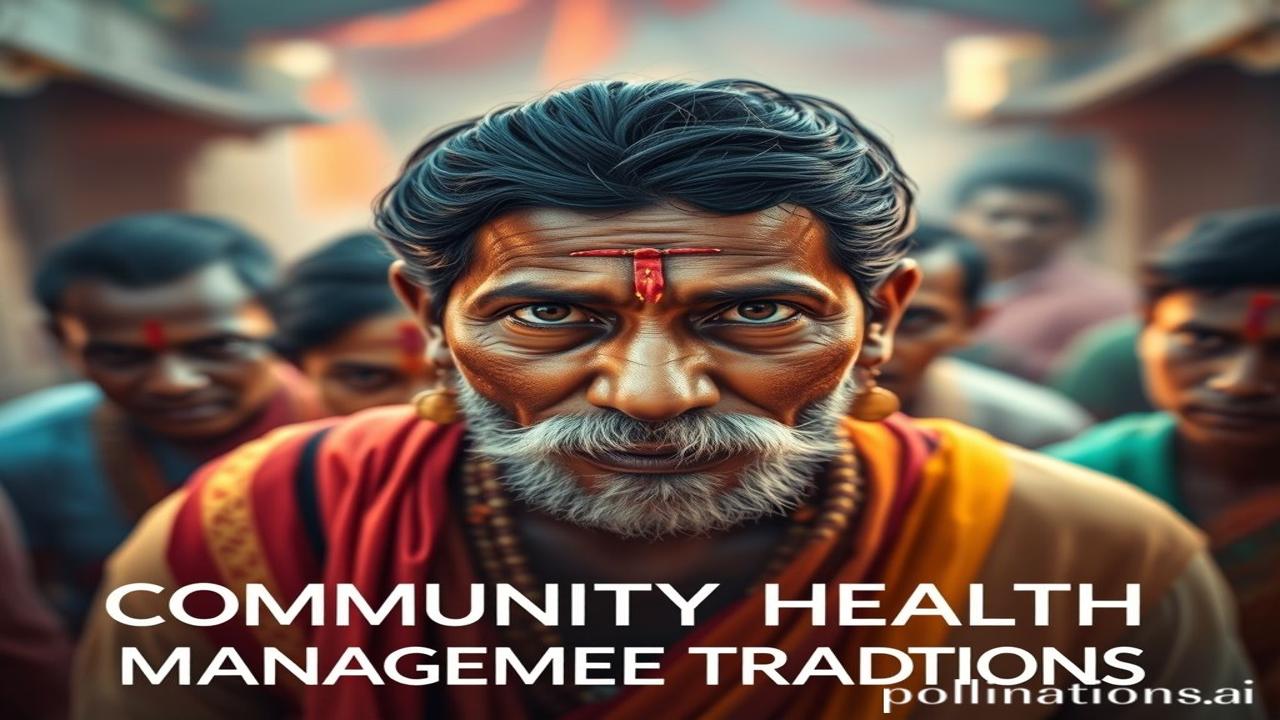Dadi Ma Ke Nuskhe Se Lekar ASHA Didi Tak: Community Health Management Ki Kahani
Kabhi socha hai, jab doctors aur hospitals nahi the, tab humare buzurg apni sehat ka khayal kaise rakhte the? Imagine the scent of tulsi and neem wafting through the air, the sound of grinding stones preparing age-old remedies. Waqt ki dhool mein dabi, yeh kahani hai Bharat ki community health management traditions ki – ek aisi virasat jo aaj bhi humare saath hai.
Historical Tapestry: From Ayurveda to Village Vaidyas
What exactly are we talking about here? Community health management, in simple terms, is how communities historically organized themselves to take care of the health and well-being of their members. This isn’t just about treating illnesses; it’s about preventing them, promoting healthy lifestyles, and providing support to those in need.
This practice is as old as India itself! Think back to the Indus Valley Civilization (around 3300-1700 BCE), where well-planned drainage systems and sanitation suggest a strong understanding of public health. Then came Ayurveda, with its holistic approach to health, emphasizing diet, lifestyle, and herbal remedies. Acharya Charak, in his Charak Samhita (around 2nd century CE), detailed preventative measures and the importance of a balanced life.
Throughout history, village vaidyas (traditional healers) and dais (midwives) were the cornerstones of community health. They possessed generations of knowledge, passed down through oral traditions and practical experience. Yeh koi kitaabi gyan nahi tha, yeh zameeni sach tha!
Zameeni Sach: Gaon Ki Zindagi, Dadi Ma Ka Pyaar
Picture this: Ek chhote se gaon mein, Ma Rukmini apne aangan mein neem ki pattiyon ko sukhane daalti hain. Woh jaanti hain ki isse bachchon ke charm rog thik ho jaate hain. Dadi ke nuskhe! Unke paas har takleef ka ilaaj hai – sardi ke liye adrakh, pet dard ke liye ajwain, aur chot ke liye haldi.
Village life revolved around natural rhythms. Farmers worked hard, their bodies strong and resilient. Artisans understood the properties of different herbs and minerals, incorporating them into their crafts. Saints and wandering ascetics shared spiritual and practical wisdom on health and well-being.
“Ma Rukmini, aaj mandir mein utsav hai! Jaldi karo!” her granddaughter exclaims. Festivals were not just about religious celebrations; they were also opportunities for communities to come together, share resources, and reinforce social bonds – crucial aspects of community health. Even dance and music were used as therapeutic tools, relieving stress and promoting mental well-being.
Dharohar Aur Pehchan: Echoes of the Past in Modern India
Even today, we see traces of these traditions. Yoga, Ayurveda, and other traditional systems of medicine are gaining global recognition. The government’s focus on primary healthcare and community health workers (like ASHA didis) reflects a renewed emphasis on community-based solutions.
Think about the popularity of home remedies, passed down through generations. From kadha for a sore throat to ghee for digestion, these practices continue to be an integral part of our lives. Yeh hamari Bharatiyata hai – our deep connection to our roots, our understanding of holistic well-being.
Fun Fact: The Power of Turmeric
Log samajhte hain ki haldi sirf ek masala hai, lekin asli sach yeh hai ki isme bahut shakti hai! Turmeric contains curcumin, a powerful antioxidant and anti-inflammatory compound. For centuries, it has been used in India to treat a wide range of ailments, from wounds to arthritis. Now, modern science is finally catching up and validating these ancient claims!
Visual and Sensory Tapestry: A Village Scene
Imagine the aroma of wood-fired ovens, the vibrant colours of handloom sarees, the sound of children playing under the banyan tree. Feel the warmth of the sun on your skin, the cool earth under your feet. This is the essence of rural India, where community health is not just a concept but a way of life. The air smells of woodsmoke and spices, the temple walls are cool to the touch, and the sounds of laughter and prayers echo through the streets.
Antim Vichar: The Circle of Life
“सर्वे भवन्तु सुखिनः, सर्वे सन्तु निरामयाः, सर्वे भद्राणि पश्यन्तु, मा कश्चिद् दुःख भाग्भवेत्” (Sarve bhavantu sukhinah, sarve santu niramayah, sarve bhadrani pashyantu, ma kashchid dukha bhagbhavet) – May all be happy, may all be free from illness, may all see what is auspicious, may no one be subject to suffering.
This ancient Sanskrit shloka encapsulates the core of community health – a desire for the well-being of all. It reminds us that true health is not just about individual well-being; it’s about the health of the entire community. And that’s a lesson that resonates across time and cultures.
